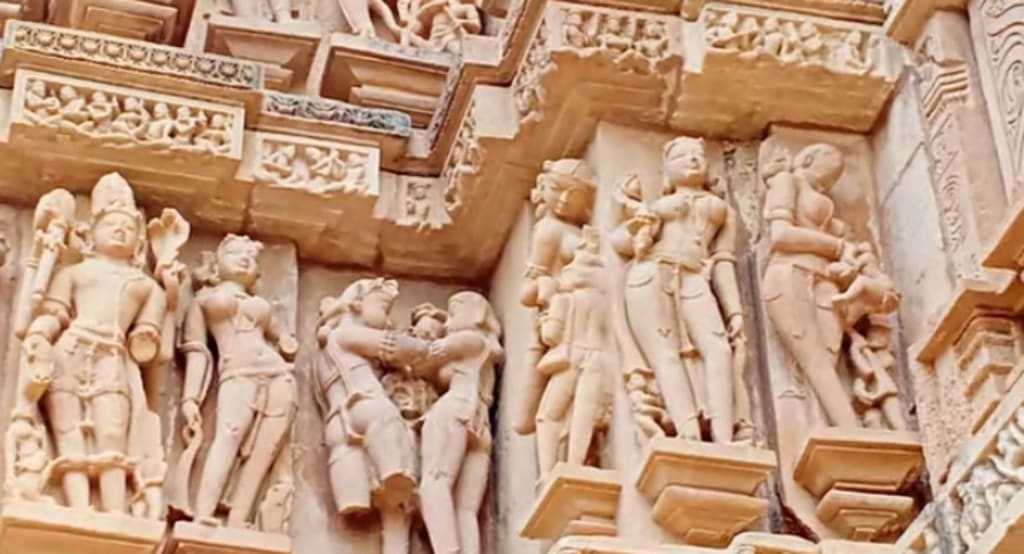Khajuraho Sanctuaries Outline
The Khajuraho sanctuaries were worked between the tenth and twelfth hundreds of years during the Chandela line rule. The site initially had north of 80 sanctuaries, yet around 20 sanctuaries have made due right up to the present day. These sanctuaries are partitioned into three gatherings in light of their geological area: the Western Gathering, Eastern Gathering, and Southern Gathering. The Western Gathering is the most popular and very much

Khajuraho Sanctuaries Outline
The Khajuraho sanctuaries are a gathering of delightfully multifaceted Hindu and Jain sanctuaries situated in Khajuraho, India. They are famous for their dazzling engineering and complex suggestive figures, which portray different parts of human existence and folklore. These sanctuaries are an UNESCO World Legacy Site and are a critical verifiable and social milestone in India. On the off chance that you have a particular inquiries or need more data about Khajuraho sanctuaries, go ahead and inquire!
The Khajuraho sanctuaries were worked between the tenth and twelfth hundreds of years during the Chandela line rule. The site initially had north of 80 sanctuaries, yet around 20 sanctuaries have made due right up to the present day. These sanctuaries are partitioned into three gatherings in light of their geological area: the Western Gathering, Eastern Gathering, and Southern Gathering.
The Western Gathering is the most popular and very much protected, lodging probably the most eminent sanctuaries like the Kandariya Mahadeva Sanctuary, Lakshmana Sanctuary, and Chausath Yogini Sanctuary. These sanctuaries exhibit uncommon imaginativeness and craftsmanship, with nitty gritty carvings of divine beings, goddesses, heavenly fairies, creatures, and different day to day existence scenes.
The Eastern Gathering contains a blend of Hindu and Jain sanctuaries, including the Brahma Sanctuary, Ghantai Sanctuary, and Vamana Sanctuary, among others. The Southern Gathering sanctuaries are less often visited yet offer design and sculptural wonders.
Khajuraho's many-sided sensual figures have frequently been a subject of interest and discussion among history specialists and workmanship fans. These figures are viewed as a vital piece of the sanctuary craftsmanship, representing various parts of life, love, and human interests.
The sanctuaries were rediscovered in the nineteenth hundred years, and from that point forward, they have drawn in guests from around the world for their verifiable importance and compositional excellence.
On the off chance that you're keen on a particular part of the Khajuraho sanctuaries or have a specific inquiries, go ahead and inquire!
Imagery: The models at Khajuraho sanctuaries go past portraying actual love; they additionally convey profound and representative implications. They exhibit different parts of Hindu folklore, like divine creatures, divine beings, goddesses, and the vast dance of Ruler Shiva (Nataraja).
Sanctuary Engineering: The Khajuraho sanctuaries are an exceptional illustration of Nagara-style design, portrayed by complicatedly cut towers called shikharas and noteworthy mandapas (pillared corridors). The sanctuaries are worked with a blend of sandstone and rock, and the accuracy and detail of the carvings are dazzling.
Social and Verifiable Importance: The sanctuaries of Khajuraho address a combination of imaginative and social impacts from various locales of India during the middle age time frame. They additionally mirror the comprehensive soul of Indian culture, with Hindu and Jain sanctuaries existing one next to the other.
Constantly: The sanctuaries take on an alternate appearance during the constantly. During the daytime, the models stand apart under the daylight, while at night, the sanctuaries are delightfully enlightened, making a hypnotizing sight.
UNESCO World Legacy Site: The Khajuraho Gathering of Landmarks was pronounced an UNESCO World Legacy Site in 1986, perceiving its social and verifiable importance and the requirement for protection.
Celebration of Dance: Khajuraho has a yearly dance celebration in February/Walk, which draws in eminent traditional artists from everywhere India. This occasion praises the rich social legacy of dance and music in India.
Secretive Erotica: The specific purpose for the suggestive models at Khajuraho stays a subject of hypothesis. A few speculations recommend that they represent richness, while others suggest that they address the quest for profound illumination through control of wants.
Decline and Deserting: Over the long haul, the sanctuaries confronted decline, and the site was at last deserted. Vegetation and woodlands had developed around them, concealing the sanctuaries from the rest of the world until their rediscovery in the nineteenth hundred years.
Visiting the Khajuraho sanctuaries permits explorers to drench themselves in the rich history, design, and imaginativeness of antiquated India. A spot enamors the creative mind and offers a brief look into the country's brilliant past.
About the Creator
Enjoyed the story? Support the Creator.
Subscribe for free to receive all their stories in your feed. You could also pledge your support or give them a one-off tip, letting them know you appreciate their work.





Comments
There are no comments for this story
Be the first to respond and start the conversation.